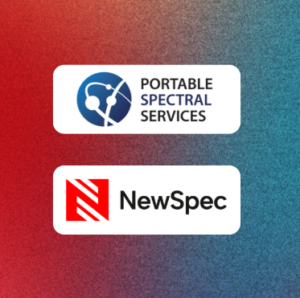
A Bright Future Ahead
Portable Spectral Services Announces Exciting Management Transition
Micro-XRF (μ-XRF) is a powerful tool for performing elemental mapping and analysis at a micro scale. The practicality of its use for real time analysis for commercial purposes rivals that of the currently more widely used alternative – Scanning Electron Microscopy (SEM). The minimal sample preparation requirements of the μ-XRF and the commercial availability of the instrument makes it a budget-friendly option for mining companies who want to know more about their samples at the micro-scale.
While μ-XRF is an established method of analysis within geoscience at an academic level, its use in industry is currently underutilised. Portable Spectral Services is currently home to the only μ-XRF openly available for commercial use in Western Australia. This is an instrument located in the heart of WA’s mining hub – West Perth, dedicated to providing services for commercial applications.
In collaboration with Portable Spectral Services, two companies have already utilised the μ-XRF to gain valuable information from their samples. Preliminary data on their samples have been released as part of their ASX announcements at the end of last year to support findings from their respective deposits. Legend Mining Ltd released an announcement for the discovery of massive nickel-copper sulphides at Rockford, while Pioneer Resources release an announcement following the commencement of drilling for spodumene at their Cade lithium deposit.
Click here to access Legend Mining’s ASX announcement
Click here to access Pioneer Resources’ ASX announcement
In both cases, half core samples were analysed with the μ-XRF without any further sample preparation, producing elemental maps of the sample surfaces. These maps have provided insight into element and mineral associations, micro textures, element liberation, and mineral genesis, in an effective way for conveying the concentration of economical elements in these announcements (Fig. 1). For Pioneer Resources, the use of additional AMICS software was used to produce a mineralogical map to show the presence and abundance of spodumene in the sample, with the mineralogy being derived from the chemical data in the XRF spectra collected by the μ-XRF (Fig.2). This software can also provide advanced semi-quantitative information on mineral abundance, assay predictions, grain size and distribution.
A single dataset collected by the μ-XRF in a non-destructive manner produces both chemical information at a micro-scale in spatial context, and mapped mineralogy inferred from the XRF data. This provides detailed knowledge of a sample to develop an advanced understanding of a deposit.

Figure 1: Element map of Ni and Cu showing the distribution of pentlandite and chalcopyrite in Legend Mining’s core (Taken from: Legend Discovers Massive Nickel-Copper Sulphides at Rockford, ASX Announcement, LEG, 9 December 2019).

Figure 2: Mineral maps constructed using AMICS software showing the distribution of spodumene in Pioneer Resources core (Adapted from: Presentation – New World Metals Conference, ASX Announcement, PIO, 11 December 2019).
For more information on micro-XRF spectroscopy visit www.microxrf.com.au/. For more information on the Bruker M4 Tornado micro-XRF visit here.
If you are interested in having your own sample analysed by micro-XRF, contact Portable Spectral Services at [email protected]
If you’re interested in how the micro-XRF can tackle the challenge of gold detection in exploration, click here.

Portable Spectral Services Announces Exciting Management Transition
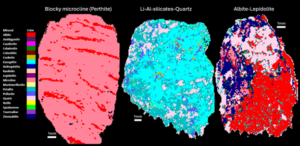
Our tool introduces uXRF (micro-X-ray fluorescence) scanning technology to RC chip analysis, enabling rapid, non-destructive, and quantitative analysis of major, minor, and trace mineral phases.
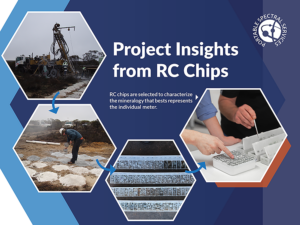
Automated micro-X-ray fluorescence (micro XRF) technology emerges as a powerful tool to rapidly and accurately capture the mineralogy of rock chip, RC and AC samples.

Findings of an ongoing regional evaluation study over concealed Proterozoic lithologies known to host magmatic nickel sulphides with potential to host other base-metal, gold and rare earth elements (“REE”) systems within the Fraser Range, Western Australia.
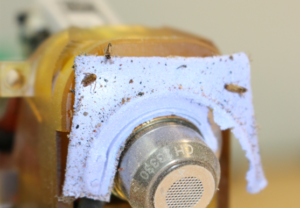
Findings of an ongoing regional evaluation study over concealed Proterozoic lithologies known to host magmatic nickel sulphides with potential to host other base-metal, gold and rare earth elements (“REE”) systems within the Fraser Range, Western Australia.
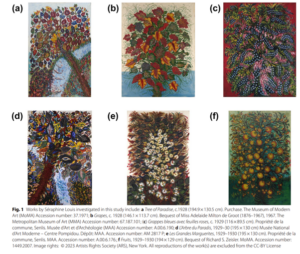
Findings of an ongoing regional evaluation study over concealed Proterozoic lithologies known to host magmatic nickel sulphides with potential to host other base-metal, gold and rare earth elements (“REE”) systems within the Fraser Range, Western Australia.
